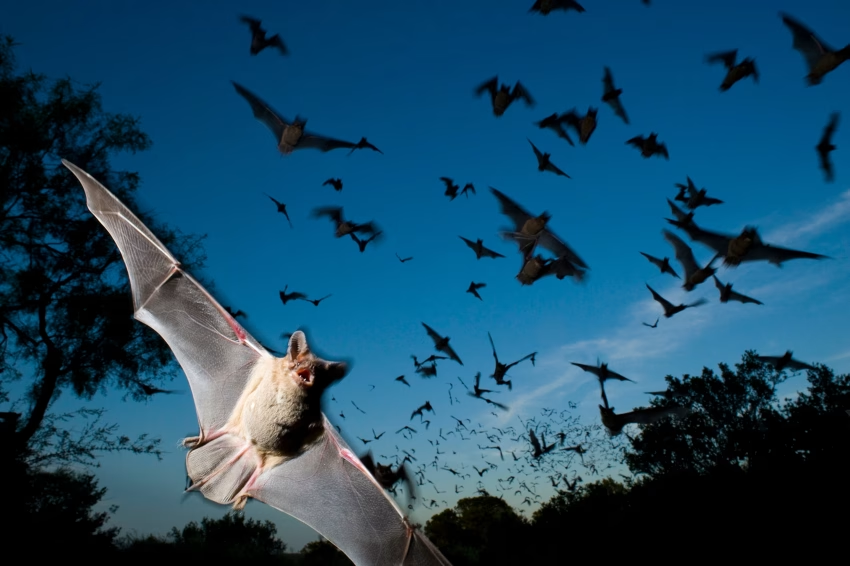magiccarouselsundays.com – Bats, the only mammals capable of true flight, have captivated human imagination for centuries. Often shrouded in myth and misconception, these nocturnal creatures play a vital role in ecosystems worldwide. This article aims to shed light on the fascinating world of bats, exploring their diverse species, unique adaptations, ecological importance, and their complex relationship with humans.
Bat Species: A Remarkable Diversity
Bats make up about 25% of all mammal species on Earth, with over 1,400 different species found in almost every habitat imaginable, from tropical rainforests to deserts. They are broadly classified into two suborders:
- Megachiroptera (Megabats): These larger bats are primarily found in tropical and subtropical regions and feed on fruits, nectar, and flowers.
- Microchiroptera (Microbats): These smaller bats are found worldwide and primarily feed on insects, although some species also consume fruit, nectar, fish, frogs, or even blood.
Physical Characteristics: Wings, Echolocation, and Metabolism
Bats have several unique physical adaptations that make them well-suited for their nocturnal and aerial lifestyle:
- Wings: Bat wings are formed by a membrane of skin stretched between their elongated fingers and body. This unique wing structure allows for highly maneuverable flight.
- Echolocation: Most microbats use echolocation to navigate and find prey in the dark. They emit high-pitched sounds and listen for the echoes that bounce back from objects in their environment.
- Metabolism: Bats have a high metabolism, which allows them to generate the energy needed for flight. Some species can also enter a state of torpor or hibernation to conserve energy during periods of cold weather or food scarcity.
Natural Behaviors: Roosting, Foraging, and Migration
Bats are naturally active creatures with specific behaviors:
- Roosting: Bats typically roost in caves, trees, or other sheltered locations during the day. They often form large colonies, which can provide warmth and protection from predators.
- Foraging: Bats are primarily nocturnal, emerging at dusk to forage for food. They play a vital role in controlling insect populations, pollinating plants, and dispersing seeds.
- Migration: Some bat species migrate long distances to find suitable roosting and foraging habitats.
Ecological Importance: Ecosystem Services and Indicators of Environmental Health
Bats play a crucial role in maintaining healthy ecosystems:
- Insect Control: Bats are voracious insectivores, consuming vast quantities of insects each night. This helps to control populations of agricultural pests and disease-carrying insects.
- Pollination: Some bat species are important pollinators, helping to fertilize plants and ensure the production of fruits and seeds.
- Seed Dispersal: Bats also play a role in seed dispersal, helping to regenerate forests and other plant communities.
- Indicators of Environmental Health: Bats are sensitive to environmental changes, making them valuable indicators of ecosystem health.
Bats and Humans: Interactions, Misconceptions, and Conservation
Bats have a complex relationship with humans:
- Misconceptions: Bats are often associated with myths and misconceptions, such as the idea that they are blind or that they are all carriers of rabies. However, bats are not blind, and only a small percentage of bats carry rabies.
- Benefits: Bats provide numerous benefits to humans, including pest control, pollination, and seed dispersal.
- Conservation: Many bat species are threatened by habitat loss, climate change, and other human activities. Conservation efforts are focused on protecting their roosting and foraging habitats and educating the public about the importance of bats.
Conclusion
Bats, with their remarkable adaptations and important ecological roles, are a vital part of the natural world. By understanding their natural history and addressing the threats they face, we can help ensure that these enigmatic creatures continue to thrive in our skies for generations to come.

